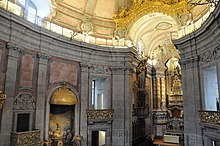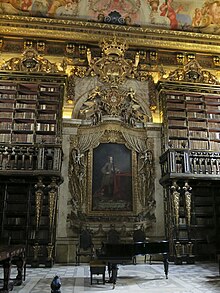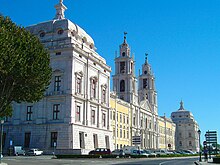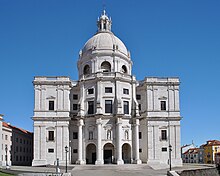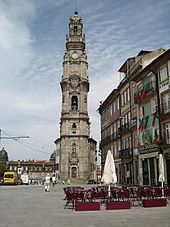Baroque architecture in Portugal
[1] It begins during a complicated moment, with the financial effort of the kingdom channelled to the Portuguese Restoration War after 60 years of Iberian Union.
After the end of the restoration of independence war, and past the crisis of succession between Afonso VI and Pedro II, Portugal was ready for the international Baroque.
Santa Engrácia is constructed with curves and geometric forms and a centred plant and is crowned by a large dome (completed only in the twentieth century), decorated with colourful marbles and imposing itself to the city.
The Palácio da Ribeira, the Royal Chapel (both destroyed in the earthquake) and the Mafra National Palace, are the main works of the King.
The Águas Livres Aqueduct brings water to Lisbon covering a distance of 11.18 miles, with emphasis on the section over the Alcântara valley because of the monumentality of the imposing arches.
[4] One of the most opulent examples of gilded woodcarving from this period, is the Biblioteca Joanina, (Johannine Library, named after King John V) built in the main University of Coimbra old building and tower parade.
With more inhabitants and better economic resources, the north, particularly the areas of Porto and Braga,[7] witnessed an architectural renewal, visible in the large list of churches, convents and palaces built by the aristocracy.

